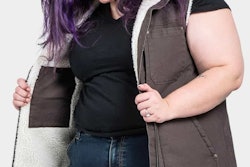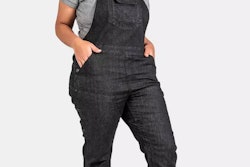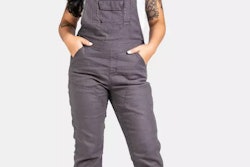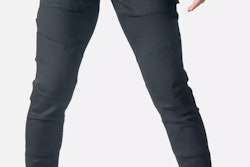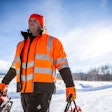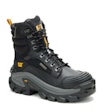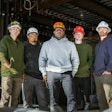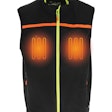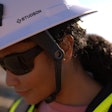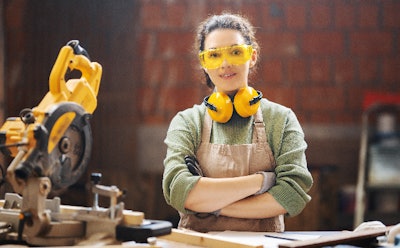
Outfitting all workers with comfortable PPE can increase compliance and lead to a safer, more productive workforce. The return on investment in proper Personal Protective Equipment & Clothing (PPE/PPC) is immeasurable against the cost of an accident. This is especially the case for women.
A comprehensive treatment of the subject of addressing the need for PPE for women by the Ontario Women’s Directorate and the Industrial Accident Prevention Association can be found here. A National Institute for Occupational Safety and Health (NIOSH) report notes that PPE and PPC such as respirators, gloves and work boots are mostly designed to fit average sized men, thus offering reduced protection to women in construction.
Enclothed Cognition
Among the issues women face when sourcing PEE is fit, altering PPE, comfort and compliance, workplace heat stress and confidence and ‘enclothed cognition,’ a term defined by the American Psychological Association to describe the systematic influence that clothes have on the wearer's psychological processes, including their symbolic meaning and the physical experience of wearing them.
Clothing not only enhances one’s psychological state, but can improve performance on tasks, according to the Journal of Experimental Social Psychology Study. In a document produced for National Safety Apparel and Safeopedia, ‘Comfort & Compliance in Women’s PPE’, the point is made that it is the employer’s responsibility as outlined by the National Fire Protection Association and the Occupational Safety and Health Administration (OSHA) to identify all potential hazards, adopt engineering controls for hazards to be mitigated, provide the appropriate PPE for hazards that cannot be eliminated, and educate employees on potential hazards and proper use and care of PPE.
Minimizing Injuries and Accidents
Issues relating to fit include decreased mobility, dexterity and coordination through oversized garments and gloves, as well as improperly fitted boots or shoes. There is a concern of increased risk of injury or accidents through ill-fitting hard hats sliding or falling off; oversized safety glasses leaving gaps; a poor fit leaving area of exposure, and oversized garments leading to tripping or catching on equipment.
Concerns over altering PPE is that doing so does not address ergonomics. It also reduces efficacy, voids manufacturers’ warranties and garment compliance with ANSI/ISEA 107 for high visibility and NFPA 2112 for flash fire and contributes to injury in the event of an incident.
The risk of non-compliance is high, leaving workers prone to injury, burns and other injuries requiring hospitalization and high monetary costs.
A comfortable garment is lightweight in that it doesn’t ‘weigh down’ the woman wearing it, is breathable in allowing heat and air to flow through and is moisture-wicking.
In contrast, heat stress can result in fatigue and confusion, cramping, dizziness, heat rash and heat stroke, with risk factors including dehydration, overexposure to high heat, high exertion and lack of rest, and some health conditions. According to OSHA, workers suffering from heat exhaustion are less alert and at greater risk for accidents. One option is the phase change technology developed for NASA which reduces perspiration up to 34 percent, with temperature regulation balancing skin temperature plus or minus three degrees. One woman-specific benefit is it helps increase comfort during hot flashes.
Other Considerations
In addressing issues regarding PPE for women in construction, OSHA notes women’s PPE should be based upon female anthropometric (body measurement) data, the agency points out.
Women should test employer-provided PPE and report when it is an improper fit or damaged from wear or defect for a suitable replacement.
NIOSH notes the construction industry should encourage PPE and PPC manufacturers to collect information on all sizes and use it to expand the range of sizes offered in both clothing and equipment, basing PPE and PPC on female measurements.
NIOSH also notes that union apprenticeship programs should provide tradeswomen with resources on where to find equipment and clothing that fits and employers should ensure all workers of all sizes have well-fitting PPE and PPC for safe and efficient performance.
OSHA notes significant progress has been made over the past several years in the availability of PPE for women, with the International Safety Equipment Association (ISEA) reporting many employers now provide a full range of sizes for PPE. A comprehensive list of manufacturers offering safety equipment in various sizes appropriate for women in construction can be found here.
Learn about brands making construction overalls for women in this IronPros article!
